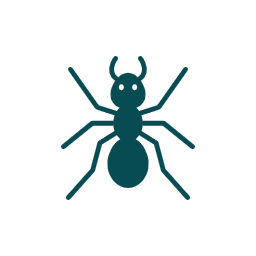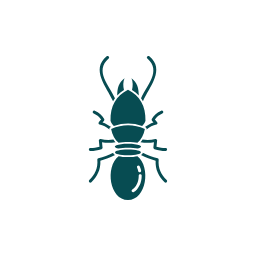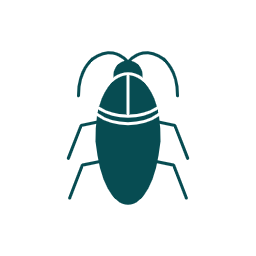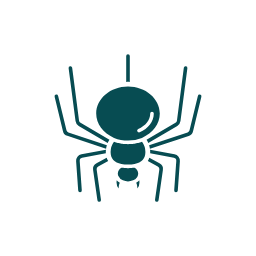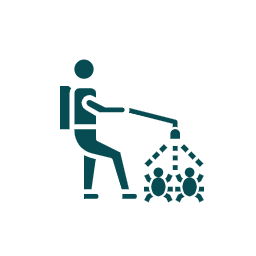It’s more than just a creepy sight when swarming flying termites appear around your home; it’s a telltale sign that there may be a risk to your property. Termite swarms are Mother Nature’s means of spreading the infestation, and it’s likely the swarming termites are a sign that there’s already an established colony nearby. This article will help you know what swarming termites are and how to know you have swarmers, along with some useful advice on how to keep your home pest-free. If you’re a new homeowner or have owned your house for decades, knowing how to recognise a termite swarm can potentially save you thousands of dollars in structural damage. Let’s deconstruct what termite swarms are, why they occur and how to stay safe from these critters.
What is a Termite Swarm, and Why Does It Happen?
Termite swarming is the process by which winged termites (called swarmers or alates) are released en masse from the termite nest as a dispersion tactic during warm, humid conditions. The reproductive members of a termite colony go out from the colony to mate and find new colonies. Swarms of termites happen periodically throughout the year, depending on the variety of termite — while subterranean termites swarm in the spring, drywood termites are more likely to swarm in the summer and fall.
That cloud of winged insects swarming while flying may appear to be doing so aimlessly, but there’s a point to all of it: the termites are on a mission to hook up with the right mate and establish a new nest. Swarmers are attracted to light, so you may find them by your windows or light bulbs. Witnessing a termite swarm inside is particularly worrisome—it could mean you already have a termite infestation in your home.
When and Why Do Termites Typically Swarm?
Swarm season is driven by environmental cues. Termites typically swarm during the warmer, wetter months—spring and early summer are common times of the year when humidity and temperature levels trigger swarm activity. These are also the times when existing termite colonies produce swarmers in large numbers.
Swarming termites may appear after a heavy rain, as moisture softens the soil and makes it easier for termites to exit their underground nests. The flying termites swarm into the air, shed their wings after mating, and begin the process of establishing new termite colonies. So, if you notice termite wings near window sills or light fixtures, you may have termite activity nearby—or even within your home.
How to Identify Termite Swarmers vs. Flying Ants
Many homeowners confuse termite swarmers with flying ants. While they may look similar, there are key differences that can help you tell them apart. Termite swarmers, or alates, have straight antennae, a broad waist, and two pairs of wings that are equal in size and long with pointed ends. In contrast, flying ants have elbowed antennae, a narrow waist, and unevenly sized wings.
Another thing to check is their wings. Termite wings are delicate and shed easily. If you find piles of wings near your window sills or doorways, especially during swarm season, it’s a likely sign of a termite swarm. Knowing how to identify termite swarmers accurately is crucial in preventing a termite problem before it escalates into a full-blown termite infestation.
Where Do Swarmers Come From, and Where Do They Go?
Swarmers come from mature termite colonies that are at least three to five years old. Once the colony is large and stable enough, it will begin to produce swarmers. These reproductive termites leave the colony in swarms and attempt to find a suitable location—often close to your home—to start new nests. Termite colonies produce hundreds or even thousands of swarmers in hopes that at least a few will successfully create new colonies.
Swarming around your home is a major warning sign. While some swarmers may die before settling, others could succeed in establishing new colonies in damp wood, soil, or any structural vulnerabilities. Flying termites swarm quickly and disperse, so even if you don’t see them for long, their brief presence near your home could mean long-term issues if not addressed.
Signs of a Termite Infestation That You Should Never Ignore
Spotting a termite swarm is often one of the first indicators of an infestation, but there are several other signs of termite damage that homeowners should watch out for. Discarded wings, mud tubes along your walls or foundation, hollow-sounding wood, and small piles of frass (termite droppings) are all signs of a termite infestation.
Inside your home, you might also see bubbling paint, warped floorboards, or damaged drywall. Worker termites consume wood from the inside out, so the damage can be extensive before it becomes visible. Termites often stay hidden, but their activity causes significant damage over time. Catching the early signs of termite damage is critical for protecting your property.


Why Termite Swarms Mean Trouble for Homeowners
Termites don’t just show up for no reason—if you’re seeing swarmers, it means there’s likely a colony nearby. And where there’s one, there could be more. A termite swarm can mean your home or property is at risk for structural damage. These pests work 24/7 and can chew through wood, flooring, and even wallpaper, causing damage to your home that’s both extensive and expensive.
Swarming termites also suggest that an existing termite infestation has reached maturity. That’s when termite colonies start producing swarmers. The larger the colony, the higher the risk to your home. A single swarm might not seem like a big deal, but when swarmers find a way inside your home, they can become the next wave of destruction—unless you act fast.
Flying Termites Swarm: What It Could Mean for Your Home
Flying termites swarm for reproduction, but what they really signal is vulnerability. If you notice a termite swarm indoors or close to your home, it may mean there are structural gaps, moisture problems, or untreated wood providing easy access and a potential food source. This can significantly increase the risk of a termite infestation.
Additionally, swarming termites indoors could indicate that a termite colony has already been established inside your walls, attic, or foundation. In that case, the swarm isn’t just a threat—it’s a symptom of a serious underlying problem. A professional termite inspection should be your next move.
Swarm Season and When to Expect Trouble
Swarm season depends on termite type and climate. Subterranean termites typically swarm in the spring, often following rainfall and increased humidity. Drywood termites and dampwood termites, on the other hand, swarm in late summer or early fall. These pests need warm and humid conditions to begin their reproductive journey.
Knowing the timing of swarm season helps you stay alert. Keep your home dry, inspect for mud tubes or discarded wings, and maintain termite protection year-round. Even if you don’t see a swarm, preventive termite control can save you from major headaches down the line.
What Makes a Home Attractive to Swarming Termites?
Several conditions can attract termites to swarm near your property. These include excess moisture around your home, untreated wood, woodpiles close to your foundation, clogged gutters, and cracks or entry points in your home’s structure. Termites may be small, but they’re experts at finding their way into damp, hidden spaces to build new nests.
Alates, or reproductive termites, are especially drawn to areas close to the ground with high humidity. They’ll find a suitable place to mate and burrow, especially if there’s a source of food and moisture nearby. Preventing a termite swarm starts with making your property less inviting to them—fix leaks, trim vegetation away from your home, and avoid leaving wood exposed or untreated.
How to Prevent a Termite Swarm Around Your Home
To prevent a termite swarm and reduce the risk of a termite infestation, you need to eliminate the conditions that termites love. First, keep your home dry—repair leaking pipes, maintain good drainage, and fix roof or gutter problems. Moisture is a key trigger for swarming termites and an essential element for any colony.
Next, seal all cracks, gaps, and entry points around your foundation and walls. Store firewood away from your house, and trim shrubs and tree branches that touch your home. These can be used as bridges by termites. A termite baiting system and regular inspections from a pest control expert are also effective termite prevention strategies.
What to Do If You See Swarming Termites Inside Your Home
Seeing a termite swarm indoors is a clear signal to take immediate action. It’s not just a nuisance—it’s a major pest alert that may indicate an infestation within your home. Do not ignore it or assume it’s just flying ants. A professional termite inspection is essential to assess the damage and confirm the presence of termites.
Don’t try DIY methods if swarmers have already made their way inside. Termites are resilient and can continue causing damage even after the swarm ends. Call a licenced pest control company like Pest2Kill. We use proven termite control techniques to detect, treat, and prevent infestations effectively.
Conclusion: Protect Your Home from the Silent Swarm
Termite swarms are nature’s way of expanding colonies, but for homeowners, they’re a loud and clear warning. Swarming termites, discarded wings, or flying termites indoors all signal potential or existing termite activity that can lead to costly structural damage. Whether you’ve seen swarmers or just want to stay ahead of a termite problem, the best approach is prevention and early detection.
Don’t wait until it’s too late. Pest2Kill offers professional termite inspections, effective pest control solutions, and long-term protection to keep your home safe from termites. Contact Pest2Kill today to schedule your termite inspection and protect your property before the next swarm takes flight.
FAQS
How can I tell if a pest issue is related to a termite colony?
If you notice winged insects inside or outside your home that resemble ants but have straight antennae and equal-length wings, you might be dealing with a termite pest issue. These swarmers are often mistaken for flying ants. Look for discarded wings, mud tubes, or soft wood in your walls or floors. These signs suggest there may be termites in or around your property, and it’s wise to inspect your home as soon as possible.
What does a termite colony look like inside a wall or structure?
A termite colony is usually hidden behind walls or beneath the floor, making it hard to detect without a proper inspection. Termites build mud tubes—also known as swarm tubes—to travel between their colony and food sources. If you see these tubes or notice small holes and damaged wood, it means termites are active outside your home and possibly spreading indoors.
Why is professional pest control important for termite infestations?
Termites are masters of stealth. By the time visible damage shows, a colony may already be well-established. Professional pest control services know how to inspect your home thoroughly and apply targeted treatments that prevent termites from entering or spreading. Without this, a termite pest can quietly cause major damage to your property.
What should I do if I suspect a termite problem but haven’t seen swarmers?
Swarmers aren’t the only sign of a termite infestation. Even if you haven’t seen flying termites, you could still have termites in or around the house. Look for hollow-sounding wood, droppings, or blistering paint. These may indicate hidden activity. Get your home inspected right away—early action can prevent termites from causing serious structural issues.
What happens during termite swarm season?
During termite swarm season, reproductive termites leave their nests in large numbers to mate and start new colonies. These termites lose their wings shortly after swarming and search for a new place to settle—often close to your home. If you notice flying termites at night or piles of discarded wings, it’s a red flag that termites are nearby and might soon be inside your home.
When do termite colonies produce swarmers?
Termite colonies produce swarmers once they’re mature enough—usually around three to five years old. These swarmers are reproductive termites that leave the colony during the warmer, more humid months. They swarm at night and are often mistaken for flying ants. If you spot them, it’s a clear sign you may have termites nearby and need to protect your home against termites before a new colony forms.
Are there certain times of the year when termite swarms are more common?
Yes. Swarming is most common during warm, humid periods—typically in spring and early summer. These are the times of the year when termite colonies produce swarmers. After a rainstorm, especially, termites may be flying around lights or windows. This could indicate an active infestation outside your home, so it’s crucial to act fast and prevent termites from settling in.


